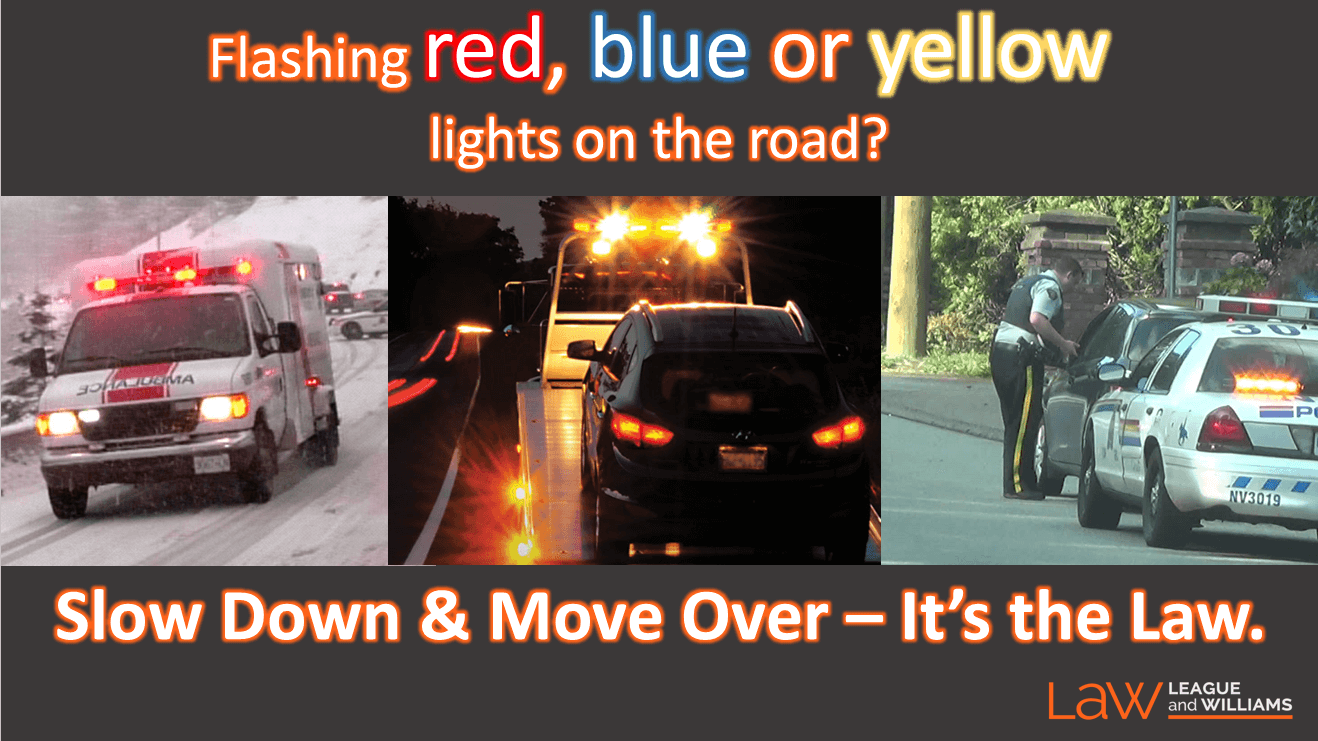GET IN TOUCH
Please contact us for more information. Our email is monitored seven days a week and we will get back to you shortly.

Despite slow down and move over being the law since January 2015, many people still forget that the BC Motor Vehicle Act requires people approaching any official vehicle parked on the side of the road to slow down and, if safe to do so, move into a lane away from the official vehicle. This law is important because motorists often find themselves approaching official vehicles parked on the side of the road, and even split second inattention when passing a vehicle closely, can lead to tragic consequences including serious injury and death.
Indeed, in the last 10 years, more than 250 people working on the side of the road, including police officers and paramedics, have been struck while helping others and more than a dozen have lost their lives as a result. So, I would like to help clear up some common points of misunderstanding about this law.
First, the slow down and move over law applies to all “official vehicles”, not just police, fire, and ambulance. Official vehicles include tow trucks, highway and municipal maintenance trucks, Commercial Vehicle Safety Enforcement vehicles, park ranger and conservation officer vehicles, utility vehicles, land surveyors, animal control vehicles and garbage trucks. As a rule, when you see a blue, red, or even a yellow flashing light, you should assume that vehicle is an official vehicle and the slow down and move over law applies.
The law requires people to slow down, and also move over if safe to do so. These requirements apply particularly to those people approaching in the lane that is closest to where the official vehicle is parked. However, it also applies to vehicles traveling on the side of the road opposite to where the official vehicle is parked, if there is no median in the middle of the road, and if the side of the road closest to where the official vehicle is parked only has one lane.
Also, importantly, the requirement to slow down is that if the speed limit in the area is 80km/h or above, such as 110km/h, you must slow down to below 70km/h, and if the speed limit is below 80km/h, you must slow down to at least 40km/h. This is often referred to as the 70/40 rule.
Lastly, the requirement to move over applies only if it is “safe to do so”. For example, when you’re traveling in a lane closest to the official vehicle and there is a second lane going in the same direction, you must pull into that inside lane unless it is unsafe to do so. What is safe, will obviously depend on the specific circumstances of each case. For example, there might be a car next to you in that inside lane, but that does not necessarily make it unsafe to move over. It is likely appropriate to slow down to allow the car next to you to pass to create room for you to move over to the inside lane.
Also, if there are only two lanes in the roadway, both going in opposite directions, you must pull into the oncoming lane of traffic if it is safe to do so, in other words, if there are no oncoming cars.
I’ve seen numerous people been ticketed for failing to comply with the slow down and move over law. Many of them caught on dash cameras. The resulting fine is $173, and importantly there are three driver penalty points assigned to your license. You may know that if you earn more than 3 points in one 12-month period, ICBC will force you to pay a driver penalty premium. This premium is in addition to any other ICBC premiums you might pay, and can be collected from you even if you don’t insure a vehicle with ICBC. For example, a person who is given 6 driver penalty points in a 12-month period will pay an additional $300 in penalty premium, and a person who earns 10 driver penalty points, will pay an additional $905 in penalty premium that year.
The financial consequences aside, clearly slowing down and moving over is the right move.
I hope you have learned something about the law from this blog. Please feel free to like us on Facebook, follow us on Twitter and subscribe to our YouTube channel to receive notice of our future weekly video blogs on the law.
Darren Williams is the principal lawyer at League and Williams Lawyers where he leads the injury law practice. He has more than 16 years of experience working in BC injury law and has the knowledge and experience to get results. League and Williams Lawyers offers free consultations and may be contacted at 250-888-0002 in Victoria, 250-746-0002 in Duncan, 250-591-1056 in Nanaimo and 250-914-4529 in Campbell River or via email info@leaguelaw.com.